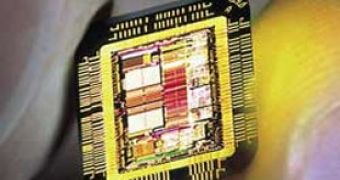The new microchip design is to be unveiled today at the International Solid-State Circuits Conference taking place in San Francisco, and may ultimately lead to the creation of ultra-efficient portable electronic devices that would be powered with energy levels 10 times lower than those created through present technology. The project represents a collaboration between the Massachusetts Institute of Technology and electronics manufacturer Texas Instruments.
Anantha Chandrakasan from MIT argues that the key to developing future energy efficient microchips stands in the level of voltage used to power them. Most of the electronic circuits work with voltages of one or more volts, while their ultra-low-power design techniques were successful in creating a MSP430 microcontroller, a widely used device produced by Texas Instruments, that works on only 0.3 volts.
One might believe that such improvements would ultimately resolve the whole energy-related problem. However, as with all things, operating microchips at so low voltage levels is not as simple as thought. The technology has evolved over the years to favor the use of high voltages, in order to operate silicon chips without losing stability. Some of the biggest problems currently encountered by the ultra-low-power microchip are the DC-to-DC converters, that reduce the voltage to that required by the chip, due to the low conversion efficiency. To solve this, researcher propose that the logical modules and DC-to-DC converters should be placed on a single microchip in order to reduce the number of separate components than need to be powered.
Secondly, it is well known that even operational microchips, although working correctly, often present flaws in the silicon chip, which, at very low voltages, may pose serious problems. Chandrakasan believes that once the design of the ultra-efficient microchip will be optimized, it could become commercially available as soon as five years, to be incorporated into portable electronic devices, such as laptops, mobile telephones and even military self-contained sensors.
Medical applications are also being considered, due to the low power requirements, and one day may be powered directly by the movement of body muscles.

 14 DAY TRIAL //
14 DAY TRIAL //